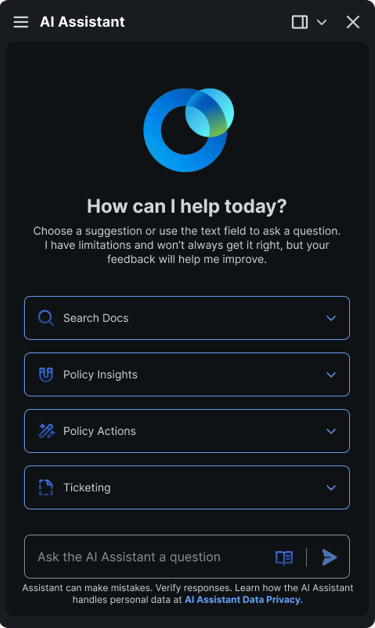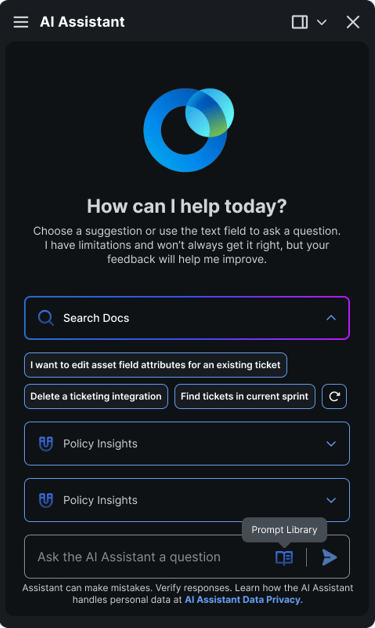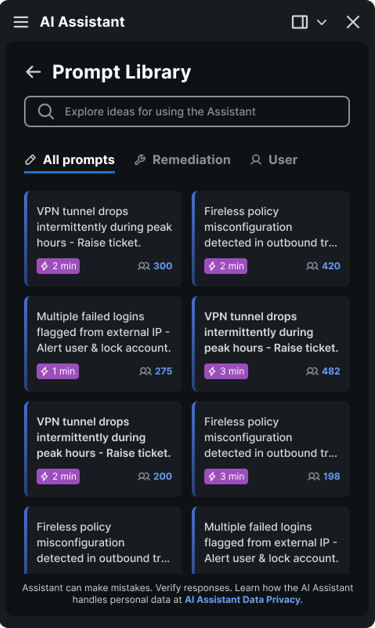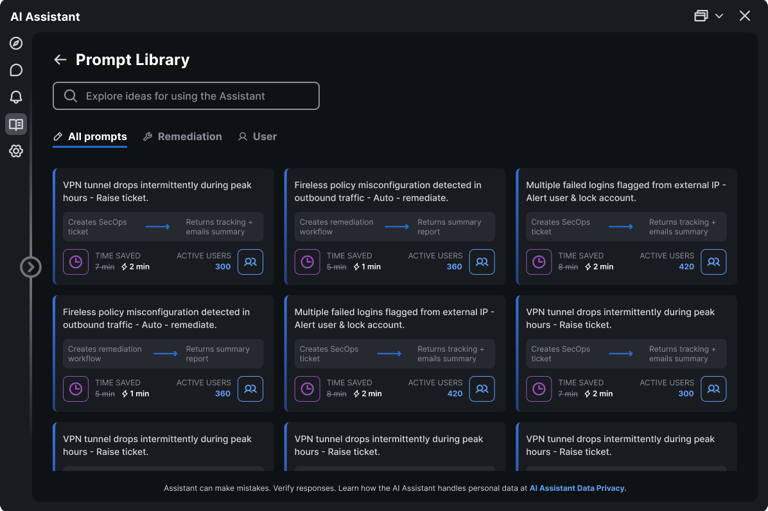AI Assistant
Enhancing AI Assistant Utility with a Prompt Library
PROBLEM
Enterprise AI Assistants often face a "blank state" problem—users open the tool but struggle to know what to ask or how to best utilize its full capabilities. This leads to low adoption and missed opportunities for efficiency.
The primary challenge was: How might we guide users to leverage the AI Assistant for complex, high-value tasks (like policy actions, ticketing, and remediation) without requiring them to be experts in prompting?
Project Overview: Bridging the Gap
GOAL
Design and implement a Prompt Library to:
Remove the "blank state" moment by offering personalized, high-value suggestions.
Provide a direct entry point to a catalog of all possible actions.
Utilize social validation to build trust and encourage feature adoption.
Create a Prompt Library structure that scales with user needs and organizational growth.
"Blank State" Moment
Users don't know what to ask.
Discoverability
High-value actions are hidden behind complex prompts.
Users are hesitant to rely on the AI for critical tasks.
Trust/Adoption
Analysis & Design Strategy
Inline Prompt Suggestions
Project Overview: Bridging the Gap
Address the "blank state" immediately with contextual, personalized quick-action buttons.
Policy/Action Categorization
Organize complex functions into clear, actionable categories, reducing cognitive load.
Prompt Library Entry Point
Build trust and drive adoption by showing the feature's utility.




Social Validation
Provide a clear, persistent mechanism for users to explore all capabilities.






Solution Deep Dive: The Prompt Library
The Prompt Library screen is the central solution for discoverability and trust.
Categorization & Search
Filter tabs (All Prompts, Remediation, User) and a prominent search bar.
Rationale/Impact: Simplifies discovery by aligning prompts with specific IT/SecOps workflows (e.g., remediation vs. user management).
Key Features & Rationale
Value-Driven Prompt Cards
Clear task titles augmented with Utility Metrics like Time Saved and Active Users.
Rationale/Impact: Drives adoption by quantifying efficiency gains and leveraging Social Validation to build trust among peers.
Visual Workflow Summary
Expanded card view shows the AI action flow (e.g., "Creates ticket → Returns summary").
Rationale/Impact: Increases trust and demystifies outcomes by clearly communicating the AI's action chain, vital for high-stakes tasks like auto-remediation.
CONCLUSION
By moving beyond a simple chat interface and integrating structured, validated guidance, the AI Assistant Prompt Library successfully transformed the user experience. This design strategy eliminated the "blank state" problem, dramatically improved feature discoverability, and fostered user trust, leading to measurable increases in adoption and efficiency across the enterprise.